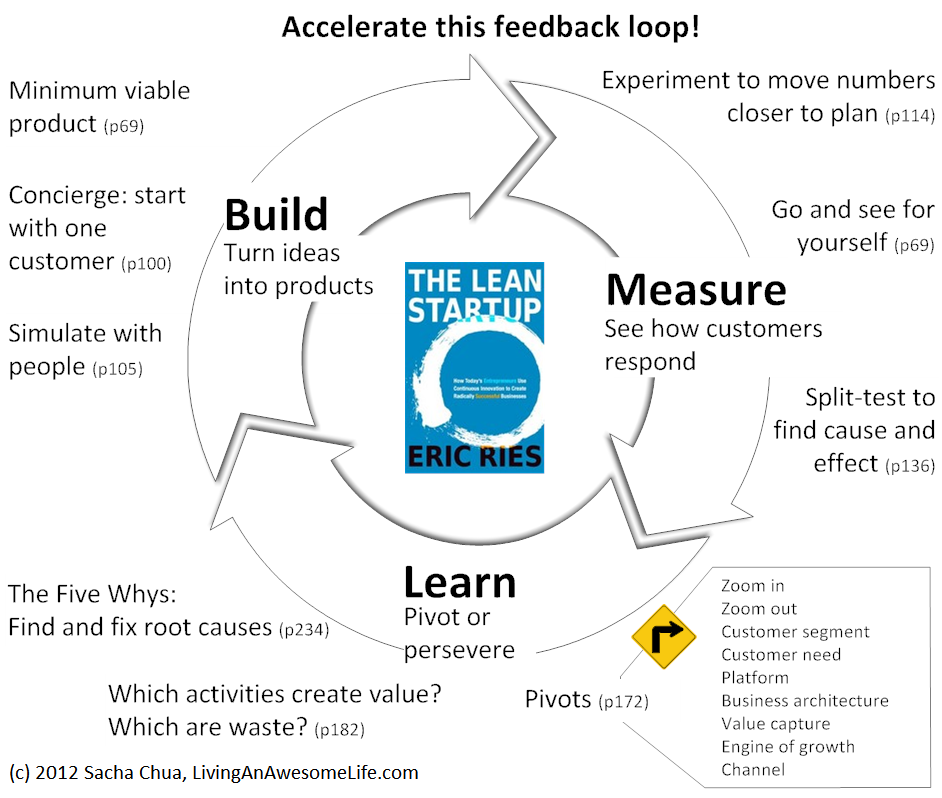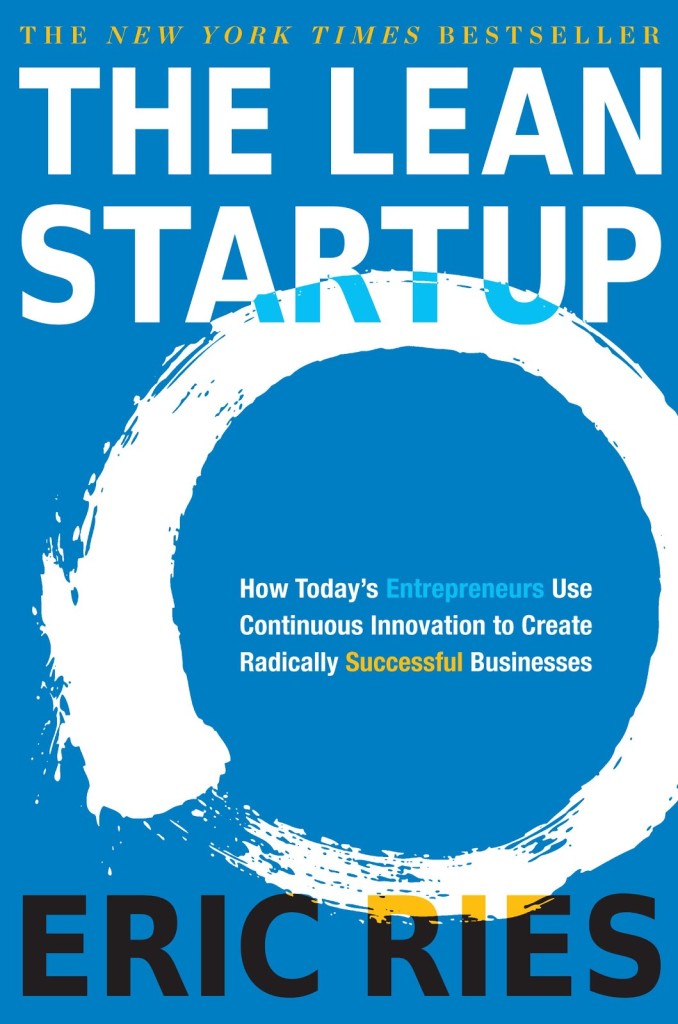Creators of new products in environments of extreme uncertainty, startups face enormous risks.
In the US, about 50% of small businesses fail in the first five years. Insufficient capital, over investment, and low sales are just some of the reasons leading to this sobering statistic.
As a startup owner, what can you do to “growth hack” your business and improve your chances of success?
Enter The Lean Startup, a New York Times bestseller by founder of IMVU (creator of 3D avatars) Eric Ries.
Borrowing heavily from lean manufacturing pioneered by Toyota as well as his own entrepreneurial experiences in IMVU, The Lean Startup proposes that companies can be a lot more capital efficient without hampering human creativity. Through rapid experimentation, short product development cycles, and rigorous measurements of the right metrics, they can ascertain what customers really want. This reduces guesswork, time, money and effort.
Embracing the principle of genchi gembutsu – translated in English as “go and see for yourself” – Ries regaled how Toyota’s manager for Sienna minivan Yuji Yokoya went on a 53,000 mile trip around North America to understand firsthand what consumers wanted in a minivan.
Such direct experiences allows one to test critical “leap-of-faith” assumptions about what customers like and dislike.
So what are some of the key ideas in The Lean Startup?
Customer Development = Agile Development
In a lean environment, you need to ensure that your customer development (ie understanding of customer needs) is closely aligned to the agile development approach in creating new products and services. In other words, you want to minimise waste in your product development process.
The lesson here is to tie iterative learning of customer preferences to improvements in your products and services. Not doing so may result in your business building wasteful innovations and features that your customers do not want.
Validated Learning
Validated learning should be the goal of all entrepreneurs. Validated learning is defined as a process in which one learns by trying out an initial idea and then measuring it to validate the effect.
Through calibrating and measuring critical learning milestones approximated to stages of a company’s development, the company could achieve positive improvements in all it’s core metrics.
Build-Measure-Learn + Minimum Viable Product (MVP)
The central core of a Lean Startup is represented by the Build-Measure-Learn feedback loop.
What you should do here is to adopt the following steps:
- Build a Minimum Viable Product (MVP) as an early adopter;
- Roll it out in the market;
- Measure performance outcomes via innovation accounting;
- Learn what works (and what doesn’t); and
- Determine if you should stick to your hypothesis or switch course, ie pivot or persevere.
A good way to bring this all together is illustrated by Sacha Chua below:

Courtesy of Sacha Chua
Innovation Accounting
As highlighted above, innovation accounting is a way of measuring progress through actionable metrics that help to tie in cause and effect.
Unlike vanity metrics often found in standard accounting practices, innovation accounting allows you to use your Minimum Viable Product (MVP) to obtain real market data. Through such information, you can create value adding improvements to your product or service.
Pivot or Persevere?
After you have learned what works (and what doesn’t), you need to decide if you should pivot or persevere. This moment of truth should be viewed objectively (think scientific experiments).
Pivots can be tiny, small, medium or large. They may take the form of singular product feature changes, shifts in customer segments, modifying of platforms, redesign of business architecture, changes in growth engines, technology migrations and more.
Small Batches > Large Batches
In a lean start-up, small batches inherently work better than large ones. Changes are more easily made to any step of the process and the costs of rework are far lower.
Three Engines of Growth
As a startup owner, you need to consider three principally engines of growth:
- The sticky engine of growth entails retaining customers through minimising attrition while growing slowly;
- The viral engine of growth comprises exponential growth through word-of-mouth means; and
- The paid engine of growth looks at advertising and other costs (sales staff, marketing and PR staff) to drive growth.
Adaptive Organisation
Finally, entrepreneurs like you should build adaptive organisations which have cultures valuing learning from mistakes while operating with discipline.
By asking the five Whys, you can ferret out the root causes of business problems. However, you need to also be mindful of not letting this degenerate into a blame game.
A Great Growth Hacking Guide
In summary, The Lean Startup is an invaluable resource for anybody charged with starting a new business venture – be they entrepreneurs or intrapreneurs.
By embracing the philosophy of thinking big and starting small coupled with a meticulous step-by-step analysis of what went right or wrong, startups can improve their chances of success.
Productivity (a huge bugbear here in Singapore) can also be raised as process efficiency can be linked more directly to the market. This is imperative in today’s inherently risky and uncertain business environment.
For more information, do check out The Lean Startup website which has many more useful links to learning resources.


Determine what area you would like to do business in,Write a business plan,Come up with a business name
Get a business phone number, Address and Checking Account,Register Your business,Get Insurance and Bonding,
Get office/business supplies,Build a Website,Start Advertising,
Meet with your first customer
these are all the steps which i keep in my mind to start my own business…
branding strategies
I would like to develop a new shampoo and conditioner with BIOTIN
I would also like this to be professionally sold. The fragrance is very important also
Is there any advice for start up IT companies?
Hi Anand, You can certainly find useful advice relevant for IT companies. In fact, the entire methodology for the Lean Startup was inspired by the agile development approach favoured by IT companies.